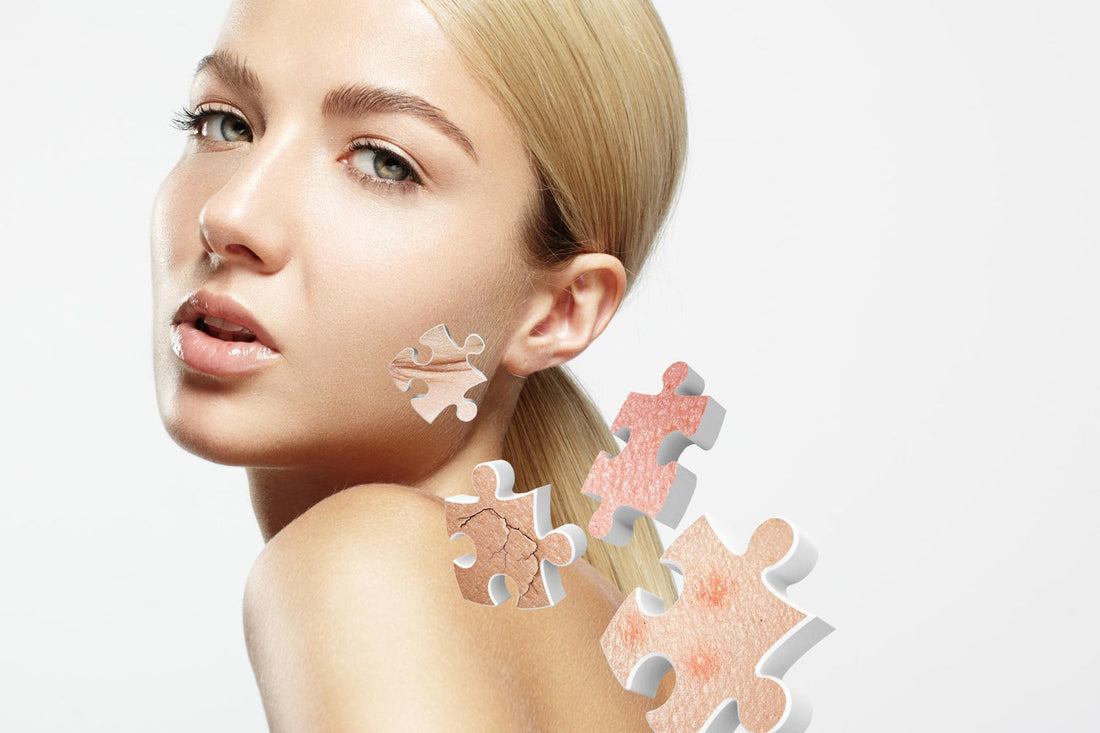Ever notice how your skin seems to have a mood of its own—clear and glowing one week, then breaking out or dull the next? You’re not imagining things. Your skin is deeply connected to your hormones, especially if you menstruate. Understanding the way your skin changes throughout your hormonal cycle can help you better tailor your skincare routine—and finally get ahead of those surprise breakouts or sudden dry patches.
What Is Cyclical Skin?
Cyclical skin refers to the way your skin changes in response to the natural hormonal fluctuations that occur during your menstrual cycle. These hormonal shifts—primarily involving estrogen, progesterone, and testosterone—can influence oil production, inflammation, hydration levels, and even skin sensitivity.
The typical menstrual cycle is around 28 days, broken down into four key phases. Let’s explore how each one impacts your skin.
1. Menstrual Phase (Days 1–5): Sensitive & Dull
Hormones: Estrogen and progesterone are at their lowest.
Skin Behavior: You may notice dullness, dryness, or increased sensitivity.
Skincare Tips:
-
Focus on hydration with nourishing creams and hyaluronic acid.
-
Avoid harsh exfoliants; opt for gentle cleansing.
-
Use calming ingredients like chamomile, centella asiatica, or squalane.
2. Follicular Phase (Days 6–14): Glowing & Balanced
Hormones: Estrogen starts to rise, improving collagen production and hydration.
Skin Behavior: This is your “glow phase”—skin feels plumper, clearer, and more radiant.
Skincare Tips:
-
This is a great time to try new products or treatments (your skin is less reactive).
-
Use antioxidants like Vitamin C to boost brightness.
-
Maintain hydration and SPF.
3. Ovulation Phase (Around Day 14): Best Skin Days
Hormones: Estrogen peaks; testosterone also spikes slightly.
Skin Behavior: Skin looks its best—clear, firm, and vibrant. But beware: a testosterone spike can lead to oily zones or minor breakouts.
Skincare Tips:
-
Stick to a balanced routine—don’t overdo it.
-
Use clay masks or niacinamide to manage oil.
-
Keep up with SPF and antioxidants.
4. Luteal Phase (Days 15–28): Breakout Prone
Hormones: Progesterone rises and then falls. Sebum production increases.
Skin Behavior: Skin becomes oilier, more acne-prone, and more inflamed—cue the PMS breakouts.
Skincare Tips:
-
Use salicylic acid or benzoyl peroxide spot treatments.
-
Incorporate retinoids if tolerated.
-
Calm inflammation with green tea extract or niacinamide.
-
Avoid over-exfoliating—this can worsen irritation.
Creating a Cycle-Smart Skincare Routine
You don’t need a whole new routine every week, but small adjustments based on where you are in your cycle can make a big difference. Think of your skincare as a rhythm, not a rigid plan. Being in tune with your body can help you choose the right ingredients and avoid unnecessary irritation.
Your skin is constantly evolving, and hormones play a major role in how it behaves throughout the month. By syncing your skincare routine with your hormonal cycle, you can work with your body—not against it—for consistently healthier, clearer skin. 🌙✨


